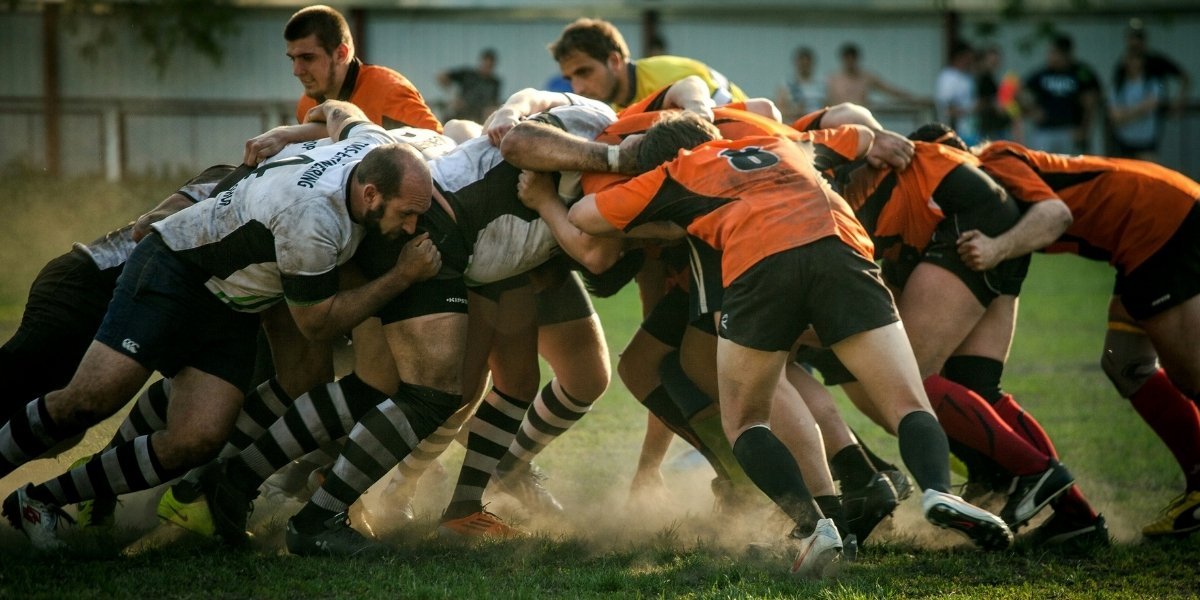What Was Harpastum, and How Was It Played?
Harpastum was a game of speed, strength, and strategy. The word itself comes from the Greek “harpazein,” which means “to snatch.” This gives a clue to the game’s core objective: two teams would try to get a small ball, often a stuffed bladder or a leather ball, past a boundary line marked by the opposing team. The playing field was typically a small rectangle, and players could pass the ball, run with it, and use their hands.
The game was known for its physical intensity. Players could tackle and push opponents to get the ball, and it was a rough-and-tumble affair. Historical sources suggest there were few formal rules, and it was a truly chaotic sport. This made it an excellent training exercise for Roman soldiers, as it taught them to work together in a scrum-like environment, improving their teamwork and physical toughness in a way that was both practical and engaging.
Harpastum’s Place in Roman Society and Culture
Harpastum’s popularity extended across all levels of Roman society. It wasn’t just a military exercise; it was also a popular pastime for citizens in the city of Rome and throughout the Roman Empire. The game was played for leisure and physical fitness, a testament to the Romans’ belief in a healthy mind in a healthy body. This ancient sport was not limited to men; there is some evidence that Roman women also participated in similar games, reflecting the social integration of physical activity.

The game’s widespread appeal meant it could be found in various settings, from the public fields of major cities to smaller local arenas. It became a cultural touchstone that united people through competition and physical exertion. A deep dive into the historical records shows that while other forms of entertainment were more spectator-focused, Harpastum was truly a participatory sport. Its role in building community and promoting physical health made it a cornerstone of Roman culture.
The Disappearance of Harpastum and Its Legacy
Over time, Harpastum, like many other ancient sports, faded from prominence. The reasons for its decline are varied, but they are tied to the broader historical and social changes that led to the eventual fall of the Roman Empire. As the empire became less focused on military expansion and its influence waned, the martial purpose of the game became less central. The widespread social and political instability of the later empire also likely meant that people had less time for leisure activities like organized sports.
The spirit of Harpastum did not completely disappear. Many believe that the game’s influence can be seen in later European sports. The concept of two teams fighting to move a ball across a goal line by running, passing, and tackling is a fundamental part of many modern sports, including football and rugby. Harpastum’s legacy is not in its survival as a game, but in the ideas it passed on to future generations of athletes and game designers. It is a powerful example of how ancient pastimes can shape the games we play today.
Tracing the Influence of the Roman Empire’s Favorite Sport
While Harpastum itself no longer exists, the echoes of its playstyle can be heard across the centuries. The game’s emphasis on teamwork and collective strategy, rather than individual heroics, is a principle that is now foundational to many team sports. The physical nature of the game also set a precedent for later sports that celebrate toughness and a direct approach to winning. This ancient Roman sport provided a blueprint for competitive engagement and physical excellence.

Historians who study this period often highlight how Harpastum was more than just a game; it was a reflection of Roman values. The idea of competing fiercely, enduring hardship, and working together to achieve a goal was a core part of the Roman identity. The lessons of Harpastum are not just about a forgotten sport, but about the very character of the people who played it. This historical example shows how a game can reflect and shape an entire culture’s values.
The Enduring Fascination with Ancient Games
The study of Harpastum and other ancient pastimes continues to fascinate researchers and sports enthusiasts alike. It provides a tangible link to a world that feels very distant, allowing us to connect with the people of the Roman Empire on a more personal level. Understanding what they played and why they played it gives us a richer, more complete picture of their daily lives. The story of Harpastum, from its competitive origins to its gradual disappearance, is a compelling narrative about how culture, history, and physical activity are intertwined.
The enduring interest in games like Harpastum proves that the desire to compete and have fun is a timeless human trait. The game’s story teaches us that sports are a mirror to society, changing as we change, and sometimes, fading away as we move on to new things. A deep look into the history of sports can often tell us as much about ourselves as it does about the past.








